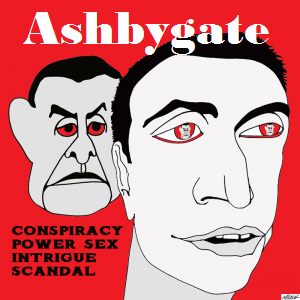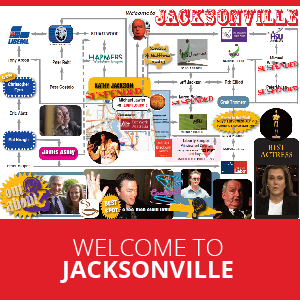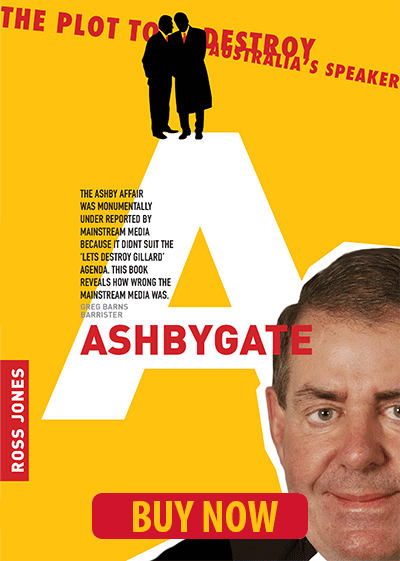Bendigo Bank, founded on the spoils of gold mining, now refuses home loans in dozens of mining towns — including the very communities that made its existence possible. Dale Webster reports.
JUST LIKE the fictional Tasmanian town of Mystery Bay, a star in its own right in the hit ABC TV series Bay of Fires, Queenstown, where much of the show was filmed, is being held back by mysterious forces.
Locals have suspected for some time that the town was a “no-go” area for home lending, but like many other disadvantages they face due to remoteness, it was believed that geography was the likely cause.
It turns out, however, that their only local bank, Bendigo Bank, isn’t interested in how far you live from a city, or the socio-economic status of your town; the one thing that will pull a home loan application up in its tracks is if you want to buy a house in an area that is on its mining blacklist.
Anyone applying online for a loan to buy property in Queenstown, Zeehan, Rosebery or Strahan – all in an area of Tasmania’s west coast known for mining activity – receives an instant knockback from Bendigo Bank as soon as location and postcode details are submitted.
The same thing happens for another 76 postcode areas across Australia.
Seen under mapping software, these postcodes are isolated pockets of “no-home loan zones” amongst a sea of neighbouring towns that Bendigo Bank will consider lending to.
Locations Bendigo Bank will and will not consider home lending (Source: Bendigo and Adelaide Bank)
In Western Australia, the locations stretch through the Pilbara, Gascoyne and Kimberley regions into the Goldfields and Nullabor mining centres. The Boddington Gold Mine, closer to more populated areas, is one that stands out as a random rejected postcode among favored ones.
Olympic Dam, Port Augusta, Whyalla and the opal fields around Coober Pedy feature in South Australia, plus a scattering of mineral sands and gypsum mining sites across a wide, disparate area.
Broken Hill in NSW, with its association with BHP, wipes out the possibility of development (at least with Bendigo’s help) in every town in this massive postcode area that stretches all the way to the Queensland border. (Neighbouring communities in Cockburn, Menindee, Wilcannia and Cameron Corner are fine, though.)
On the other side of the state, Ashford, site of the coal-fired power station that took its name, sits lonely as a cloud among postcode areas Bendigo Bank has no issues with.
The Marcoola area near Muswellbrook, site of the Marcoola open-cut coal mine, has been blacklisted, as had Kandos, famous for its limestone quarry, and Glen Davis, where the Glen Davis Shale Oil Works once provided one fifth of the shale oil produced in Australia.
The remainder of the blacklisted areas that have been identified in NSW include Walcha/Woolbrook for its gold mining activity (said to be the highest-producing gold field in the Southern New England region), Cooplacurripa Station (which has recently been bought by an investment company backed by Rio Tinto and BHP as a “nature repair project”) and – you have to feel a bit sorry for this town – Moree, whose only sin appears to be its abundance of mineral springs.
Home lending in all of Queensland’s mining regions – from coal, oil and gas to opal mining – is knocked back by Bendigo Bank.
Distinct areas separated from others by favored postcodes include Moura (4718) in the Bowen Basin coalfield, home to the Dawson Coal Mine, Mount Isa (4825), site of one of Australia’s largest copper and zinc mining complexes, and the world-renowned opal fields surrounding Quilpie and Longreach.
Coal centres Moranbah, Dysart, Clermont, Emerald and Blackwater are no home-loan zones, as is the Roma-Miles-Dalby district, the site of Australia's first oil and gas discoveries.
Weipa, built by Rio Tinto to house bauxite mine workers in Far North Queensland, gets an instant knockback as does Tieri, built to house coal workers north of Emerald, and the Northern Territory communities of Jabiru (created to house workers from the Ranger Uranium Mine) and Alayangula (established by the Groote Eylandt Mining Company to be the residence for its manganese mine workers).
The only other postcodes in the Northern Territory to be rejected – all have been checked – are 841 and 062.
The 841 area was originally a workers camp for the construction of the Darwin River Dam, which supplies water to Darwin.
The 062 area contains Muckaty Station, which achieved notoriety as the site proposed (unsuccessfully) by the Australian Government to build a nuclear waste dump.
Just two postcodes have been found to be off limits for home lending in Victoria – 3887, the site of the Lake Tyres Aboriginal community and the proposed Nowa Nowa Iron Ore Project in the Tara State Forest, and 3921, French Island, once put forward as a site for a nuclear power plant by the Victorian Electricity Commission and now a national park.
Due diligence
In the course of this investigation, more than 1,000 locations across Australia have been run through Bendigo Bank’s online loan process to verify whether this is truly a mining blacklist or if these postcodes are part of a bigger cohort focusing on general risk.
The Australian Taxation Office’s ten lowest earning suburbs in every state and territory for 2021-22 were reviewed.
The top 100 riskiest suburbs to purchase housing in for 2024 according to Realestate.com were reviewed.
Climate Valuation’s top 30 suburbs by “number of high-risk properties from all climate change hazards by 2030” were reviewed.
The searches brought up no new areas, with the occasional crossovers that did occur relating to mining towns that had already been identified.
Every postcode in Tasmania and the Northern Territory has been checked and where this was not possible in states due to sheer numbers, an inspection of locations adjacent to rejected areas was undertaken, as well as ones with similar characteristics such as remoteness and size.
One thing is clear.
Bendigo Bank will lend for housing in the poorest, riskiest and most isolated places in Australia rather than a mining area — unless it’s in Victoria or near one of its banks it wants to keep open.
Can of worms
A lending blacklist solely based on mining is big news.
Blacklists are known to exist and are even acknowledged by banks, but they are based on risk, which these days has a lot more to do with over-development than the boom-and-bust cycles of a particular industry.
The bigger mining areas will always feature but as the 2024 assessment of Australia’s top 100 riskiest suburbs to buy in by Realestate.com showed, the number of mining towns included was insignificant compared to urban areas affected by housing sprawl.
The discovery of this blacklist opens a particularly nasty can of worms for Bendigo Bank.
Its most pressing issue is that it has been running a bank in Queenstown where it was not prepared to loan for housing.
It is now planning to close that branch down in a week’s time, citing unviability.
The second biggest headache it creates for the bank is that Bendigo, the city from which Bendigo Bank takes its name and where it has its head office, was built on gold mining.
The volatility of the gold mining industry is even credited for the survival of the building society from which it originated.
Alan Mayne wrote in his 2008 book, Building the village – A history of Bendigo Bank, thatit was the cautious business policies and conservative approach to risk management that were followed because of the instability of gold mining that saw the Bendigo Mutual Permanent Land and Building Society surviving when others failed.
Mayne wrote:
‘The subsequent development of Bendigo’s building societies into a national bank was determined in part by the long-running effects of the Victorian gold mining boom that began in 1851, and by the peaks and troughs through which that boom was played out and through which it gradually diminished over the following century.’
If any bank should understand the benefits of mining to a local economy, and that it has been proven time and time again that mining towns do survive and thrive, it is Bendigo Bank.
Which raises one last point.
Nearly every area on the blacklist is mining-related but not everything mining-related is on the list.
The biggest gold mine in Victoria, Fosterville, is located 20 kilometres from Bendigo Bank’s national office – exactly the same distance the Henty Gold Mine is from the Queenstown branch.
For Bendigo's part, it says it will only lend for against approved properties in capital cities and major regional centres using the online process.
With the bank's first priority in its 2030 Strategy to ‘Make life easy with digital’ and number two to ‘embrace Artificial Intelligence (AI) and automation to transform how we work’, the online lending channel is a key pillar of the bank's digital transformation agenda.
Is this the future of lending at Bendigo Bank, where AI-driven processes have more power than the local bank manager?
Playing God
In Bay of Fires, there is a scene where a character describes what it was like growing up on the west coast of Tasmania.
“There’s not too many places like this left on Earth,” he tells the lead actor's on-screen children. “Growing up here as a kid was heaven. You could run amok, go wild, not a care.”
If banks refuse to loan for homes in regional communities, it makes it near impossible to attract and retain the young families needed to keep business and industry running, to fill classes to ensure schools stay open, keep the footy club alive and generally add vibrancy to the local economy.
If buying outright is the only option to purchase a home, sales are generally limited to the retirement investor market, but how long are these people going to stay in a town that has trouble keeping its services running due to lack of staff?
Banks like Bendigo are playing God with which towns will survive and which won’t.
No home loan lending in a postcode means, eventually, the only families growing up and enjoying what that part of the world has to offer will be the stuff of fiction.
Final words
For a bank that has literally been built on the foundations of gold mining and takes its name from one of Australia’s most famous gold mining cities to discriminate against communities on the basis of mining is a betrayal.
Bendigo Bank is about to close a once profitable community bank in Queenstown that it took over two years ago and now says is not worth keeping open.
That bank has been running with a home loan ban hanging over it because of the town’s link to mining, by a bank built on mining.
Without income from home loans that branch would have had little hope of success.
Without young people being able to get a loan to buy their own home, neither does the town.
As much as I would like to encourage any customers in the postcodes affected by this lending strategy to quit this new, corporate version of Bendigo Bank (as well as customers in the city of Bendigo to which this bank has brough such great shame with its recent actions), chief executive Richard Fennell has one chance to redeem himself by stopping the closure of the Queenstown branch on 26 September.
There is still six months left on the lease. The staff will have to scavenge back the furniture and wall clock they have already given away, but it is a move than can be enacted with one phone call.
This town deserves an apology and an act of grace rather the “so long and thanks for all the fish” it is getting.
Over the next six weeks, 22 communities will be losing their last banking services thanks to Mr Fennell.
It is time for more MPs to come forward and do something that will actually have an impact on this issue.
Three of the towns on Bendigo Bank’s mining blacklist are in the electorate of Maranoa in Queensland, held by the Leader of the National Party, David Littleproud.
Bendigo will not loan for homes in Chinchilla where he was born and bred, or Roma and Dalby where he has electorate offices.
Former Nationals Leader Barnaby Joyce's home postcode outside Tamworth has been singled out because of gold deposits.
It has now been 16 months since the final report from the 2023-24 Senate Inquiry into Regional Bank Closures was tabled with no response from Prime Minister Anthony Albanese's government.
If he won't officially respond, which federal MP has the guts to stand up in Parliament and get at least recommendation two – the establishment of an expert panel to investigate the feasibility of establishing a publicly owned bank – rolling?
Liberal, Labor, the Greens or an Independent, it really doesn’t matter — this has gone too far.
In Queenstown, there are just over 200 Bendigo Bank customers who can’t do digital banking. Their nearest branch if the closure goes ahead next week will be two hours away along a treacherous road with 99 hairpin bends that are a danger to even the most experienced drivers.
The road is so neglected a pothole ripped a tyre from a vehicle recently.
This is just a repeat of the hundreds of similar stories told to the Senate Inquiry.
A responsible government does not let this happen to people.
Every town needs a bank.
Dale Webster is an inaugural recipient of a Walkley Foundation Grant for Freelance Journalism on Regional Australia. This article was originally published on The Regional and has been republished with permission. You can follow Dale on Twitter @TheRegional_au.
 This work is licensed under a Creative Commons Attribution-NonCommercial-NoDerivs 3.0 Australia License
This work is licensed under a Creative Commons Attribution-NonCommercial-NoDerivs 3.0 Australia License
Support independent journalism Subscribe to IA.

Related Articles
- What Bendigo Bank does in the shadows
- Bendigo Bank axed Indigenous service weeks before reconciliation launch
- Bendigo Bank profit surges as community groups get the boot
















